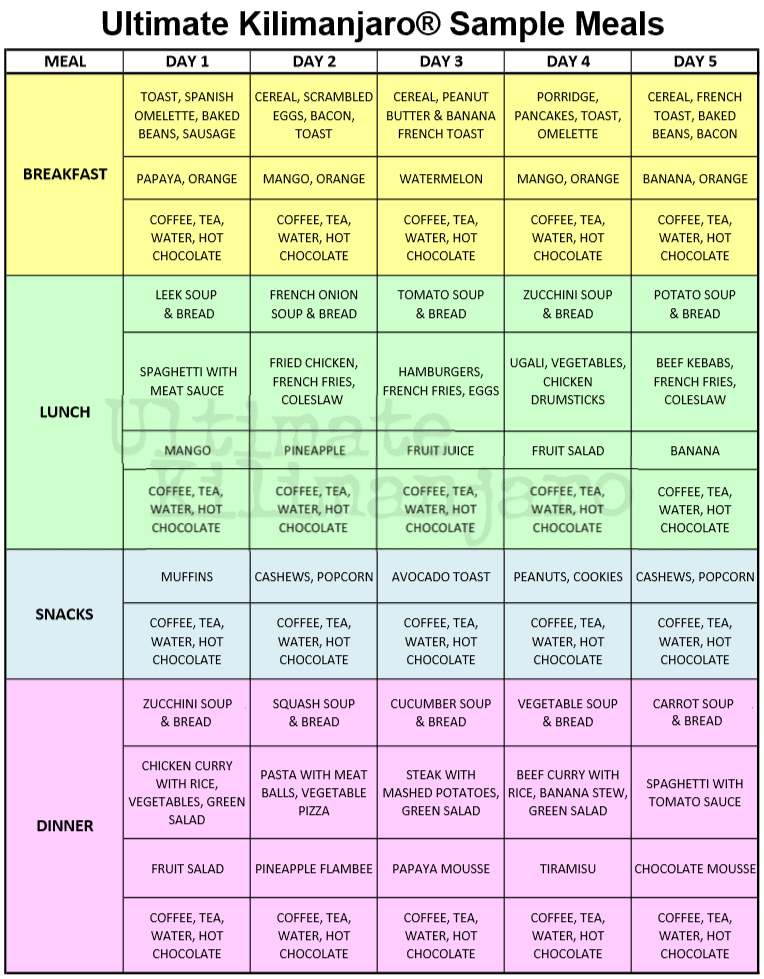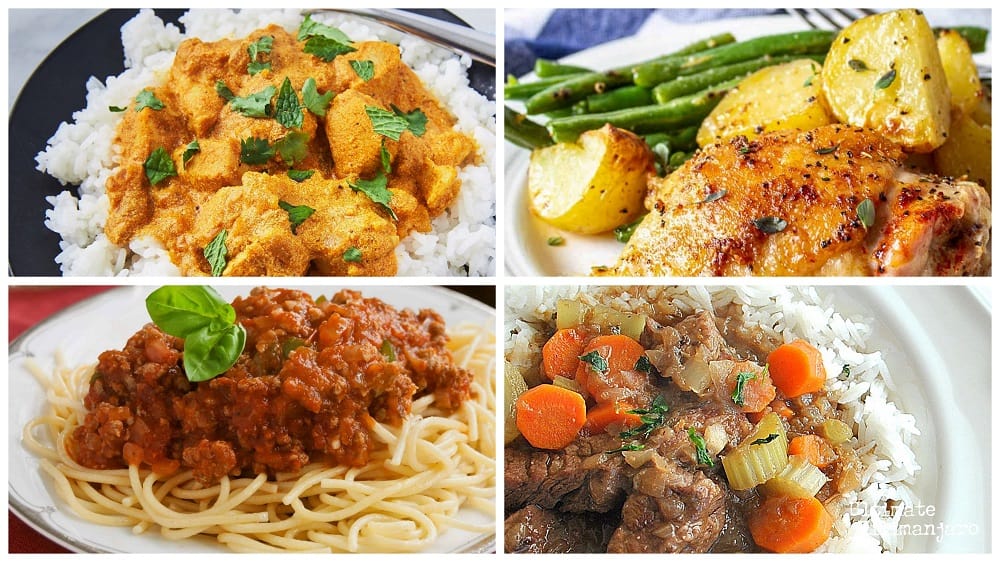When people think about backpacking and camping, the food that comes to mind usually involves unappetizing dehydrated food packages and unhealthy powdered mixes. On Mount Kilimanjaro, this could not be farther from the reality. Up here, you eat real food — and lots of it.
Supplying your body with continuous calories is an important factor in successfully climbing Kilimanjaro. While an average person on a typical work day burns around 2,500 calories, a hiker on Kilimanjaro can burn 6,000 to 8,000 calories a day! In order to keep well fueled, you have to eat.

Meals on Mount Kilimanjaro
You will be provided with breakfast, lunch and dinner each day spent on the mountain. The food, specifically selected to help your climb, are high energy carbohydrate foods that are easily digestible.
Our Ultimate Kilimanjaro® mountain chefs are brilliant at what they do. The taste and variety of the menu items is very impressive. We regularly receive glowing feedback from our clients that they were pleasantly surprised at how good the food was and how it really helped them in their quest for the summit.
Below is a sample of the food we serve on the mountain for breakfast, lunch and dinner, as well as snacks and beverages:

Note that we can accommodate vegetarian and vegan diets.
For those with special diets, please contact us to discuss what we can or cannot do. Note that food selection is limited in Tanzania, so although we will try to please all clients, in some cases clients will be asked to bring their specific food items to us, which our cooks will prepare.

Most Kilimanjaro operators do not serve hot lunches to their clients. Instead, they are given a “box lunch” to take along with them for consumption while on the trail. These meals generally lack variety, taste and nutrition.
Water and Snacks on Kilimanjaro
Water is collected from mountain streams and treated with Aquatabs® water purification tablets. Water is provided only at the campsites so you need to carry enough water, usually about 3 liters, to stay hydrated while you hike.
You may want to bring some supplementary “comfort” foods, such as candy, gum, chocolate, health bars or powdered energy drinks.
Carbohydrate Requirements
The primary carbohydrate of the meals are rice, potatoes and pasta. Fresh fruit and vegetables accompany every meal. Meat is served on the mountain but not in large quantities because it is not easily digestible at high altitude and nor does it keep well on the mountain. We resupply the team with fresh food throughout the climb.
It is well known that eating a high carb diet is best for boosting endurance. In general, carbohydrates replace depleted muscle glycogen, prevent muscle deterioration, and require less oxygen for metabolism. At high elevations, this effect is even more pronounced.

When exposed to altitude, there is a shift in the body’s energy source from fat to carbohydrates. Carbs require 8-10% less oxygen for metabolism than protein or fats. Researchers have found that people naturally increase their carbohydrate consumption when at high elevations, presumably as a response to the low oxygen in the environment.
Protein and fat are not well tolerated at altitude. Because absorption of protein and fat drops substantially, you should reduce your intake accordingly.
Carbohydrates are the preferred energy source and should make up the largest percentage of food at high altitude. It is recommended that 60% or more of your calorie intake should come from carbohydrates at high altitude. Therefore, our menu is predominantly made of high carb meals designed to sustain your body’s performance on the mountain.

Not only are carbs the best source of energy for climbing, carbs are also needed for altitude acclimatization. A high carb diet has been shown to prevent symptoms of acute mountain sickness (AMS). Researchers have found that a high carbohydrate intake can reduce the effects of altitude by 1,000 feet at a height of 13,000 feet and 2,000 feet at a height of 17,000 feet.
Tips for Eating at Altitude
At higher altitudes, people struggle with appetite loss and nausea. Try your best to keep eating regardless. You want to avoid going into a calorie deficit on the mountain because it will make acclimatization, recovery and athletic performance more difficult. It is better to eat the “wrong” food than no food at all. So eat whatever you can, whenever you can. Protein, fat and carbohydrates are all sources of calories.

We do recommend that you bring some snacks to supplement your diet on the mountain. Snacks add some variety to the food you eat, are another source of calories, and can provide a little morale boost when times are tough.
Here are some best practices for eating and drinking on Kilimanjaro.
- Wash your hands before every meal.
- Don’t skip meals. Eat even if you are not hungry.
- Eat a high carbohydrate diet (which we will provide).
- Bring snacks from home that you love to eat.
- Drink at least four liters of water per day.
- Take electrolytes.
- Avoid consuming alcohol, tobacco or depressant drugs including barbiturates, tranquilizers, sleeping pills and opiates.
- Avoid excessive caffeine consumption.


















































